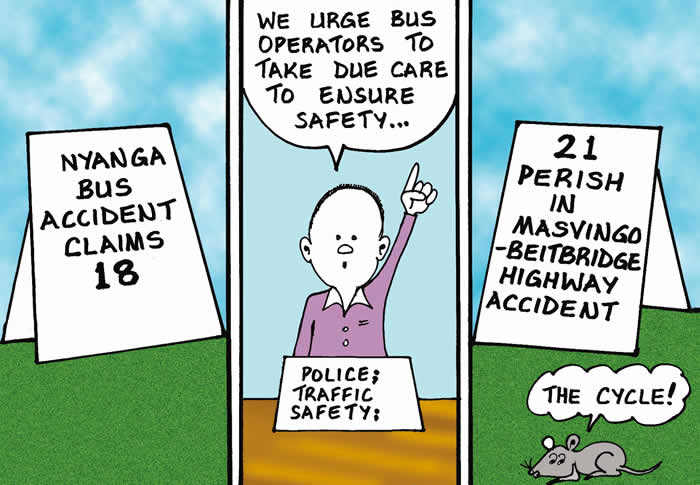Lake Chivero ranks high in pollution
programme designed to rehabilitate the catchment and ensure that corrective measures are implemented to arrest the further deterioration of the water system. Harare, Chitungwiza and Ruwa were identified as the major polluters through the disposal of raw sewage into the river systems that eventually feed into Lake Manyame.
Zinwa water quality assurance manager Mrs Nyaradzayi Matenga, who is also a member of the ILBM, confirmed in an interview that Lake Chivero was a world-renowned source of polluted water.
“It is amazing that we manage to treat water from the lake for domestic use. Lake Chivero is actually in the top 10, if not five, of the most polluted lakes in the world.
“The sources of pollutants are the sewage systems in Ruwa, Chitungwiza and Harare,” she said.
Mrs Matenga said the solution lies in rectifying the sewer systems for Harare, Ruwa and Chitungwiza.
“We have tried other methods like the removal of the hyacinth weed, but for as long as the sewer nutrients continue feeding into the river systems, the problem will persist.
“We need to get our sewer systems working and then give the lake and the rivers a healing period,”
she said.
Mrs Matenga said one of the least talked about forms of pollution comes from the diffuse or non-point sources which include agricultural activities and urban run-off.
Harare uses up to seven water treatment chemicals to make the water potable but still receives complaints from consumers who suspect that the water is of poor quality.
Mrs Matenga said the pollution of Lake Manyame continues downstream with Norton and Chinhoyi towns also disposing raw sewage into the river system. She said some farmers were refusing to use water from Lake Manyame, complaining that it damaged crops or that they were losing some of their overseas markets because the crops had too much content of certain nutrients.
On a national scale, Mrs Matenga said the water quality in rivers and dams was deteriorating because of rampant pollution through mining and farming activities.
She gave the examples of the Mzingwane catchment area where the Thuli and Mzingwane rivers are contaminated with cadmium which causes birth defects.
Mrs Matenga said mining operations such as the Chiadzwa diamond mining had caused the pollution of river systems in the Save catchment area.
The results have been evident in the rising costs of water treatment for Birchenough, Checheche and Chipangai.
She said in the Umguza sub-catchment of Gwayi, the effects of pollution have been felt by farmers whose produce has been denied entry in to the European market because of high levels of nitrates.










Comments